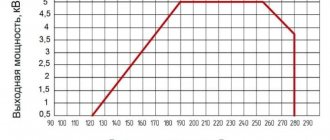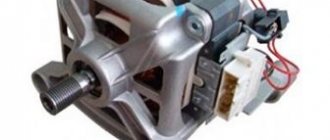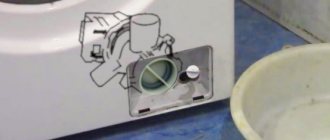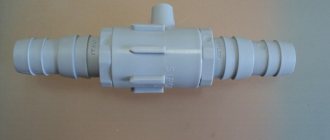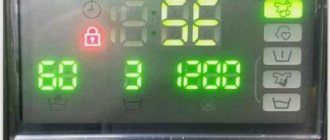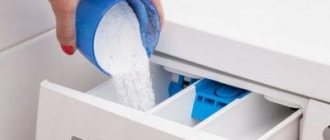For people who do not have in-depth knowledge of electrical engineering, the term residual current device (RCD) will not say anything specific. And many houses and apartments still do not have such a device. Although it is definitely worth installing in rooms with a large number of electrical appliances (for example, a kitchen or bathroom).
This device is designed to protect people and electrical equipment from accidental electric shock or leakage of electric current.
It is also possible to install a differential automatic machine (difavtomat) instead of an RCD. The general principle of operation of the difavtomat is similar to a residual current device, but has several additional functions: protection not only against current leakage, but also against short circuits and overloads in the electrical network. An automatic switch is also installed in its design.
Externally, it looks like a small plastic box with a toggle switch and several holes for connecting electrical wires. But the apparent simplicity of the design has no analogues.
The operating principle of the RCD is quite simple. The device constantly “compares” the current going to electrical appliances with the current coming from them, and if a difference occurs, it automatically turns off the power grid. But there are still drawbacks to this design. If, during an electric shock to a person, the current does not leave the closed circuit (is not grounded), the RCD does not trip because it “does not see” the voltage leak.
When to install a difavtomat?
In what cases is it necessary to install a difavtomat? Let's say in your house or apartment there are a number of separate lines in different rooms for sockets and lighting 5,10,20 and maybe more. The ideal option in this case is to install difavtomats instead of simple circuit breakers on each line.
Interesting materials:
What species is the killer whale? What type of transport is a bus, yacht, dump truck? What is the maximum period for conducting a scheduled inspection by Rospotrebnadzor? What is the level of aspiration? What is the genre of The Master and Margarita? What were the consequences of the collapse of the USSR? What were the prerequisites for the creation of the Kazakh Khanate? What are the main purpose and design features of magnetic starters? What are the main elements of a nuclear reactor? What are the main results of the Russian-Turkish war of 1787-1791?
Automatic washing machine - what is it and why?
Many information sources, both on the Internet and in printed publications, only mention an RCD for a washing machine as protection. This is not a complete answer to the question. An automatic fault response system should:
- cut off the device from the network if the washing machine enters short circuit mode;
- protect people from leakage currents hazardous to health;
- have a rated power of each unit, guaranteeing operation at maximum consumption of the washing machine.
To neutralize all dangerous factors, it is not enough to install a circuit breaker. The RCD does not fully protect equipment and the power grid. The automatic washing machine has many disadvantages. Each security device monitors certain network parameters, so it is important to select the right list of equipment.
Why are extension cords banned?
The power wires transmit power of more than 2 kW. Therefore, all disconnecting connections must ensure perfect contact. This is possible with European sockets that have a large area of contacting contacts. But this cannot be done without losses, and extension cords only increase them. The consequence of losses is heating. Extension cords are often plugged into regular sockets - with the help of adapters, losses increase even more. Due to constant heating, contacts burn and plugs and sockets deteriorate. As a result, a fire occurs.
Installing a residual current device yourself
It is not difficult to install current protection. You will need a 3x2.5 mm VVG wire - it is pulled from the switchboard. The procedure is as follows:
- Using the indicator, phase and zero are determined.
- Connect the found conductors to the RCD.
- The wires are removed from the housing and the socket is connected to the RCD.
This is the simplest connection diagram. If, in addition to the washing machine, other consumers will be connected to the network, install an additional protective device. This will ensure uninterrupted operation for all consumers.
The difavtomat is installed in the same way. Thanks to this device, your washing machine will be reliably protected from dangerous power surges that can hopelessly damage any of its components - motor, control unit, pump, etc., and you - from electric shock.
When installing the washing machine in the bathroom, the outlet must be:
- moisture-proof;
- grounded.
If washing is in progress, it is better not to take a bath: if water splashes into the socket, a short circuit may occur and an electric shock may occur. After completing the cycle, remove the plug from the socket and close the lid of the socket tightly. All laid wires are protected with plastic corrugations. The wiring is located as high as possible from the floor. The ideal solution is a separate wire for the washing machine. Its minimum cross-section is 2.5 m². The socket and protective automatic equipment must be located so that in the event of a breakdown, the equipment can be easily switched off.
RCD, JSC, difavtomat and the principle of their operation
To properly understand why it is necessary to install several protective devices, you should first consider the principles of their operation and the controlled network parameters. It is reasonable to lead the description from simple products to more complex ones.
Residual current circuit breaker (AO)
The simplest single-phase circuit breaker is an analogue of a fuse. This is the most understandable description of his work. The device is triggered when the rated currents are exceeded, allowing you to control power and connect a limited number of consumers to a certain section of the network. This guarantees the absence of emergency modes associated with wiring overload.
Installing an automatic machine allows you to protect sections of the general network from emergency conditions. If the machine goes into short circuit mode, triggering a protective shutdown will preserve the functionality of other devices in the apartment. Thus, the main characteristic of the machine is reliable control of currents on the machine line and blocking of emergency modes.
RCD
The task of a protective shutdown device is primarily to neutralize dangerous factors for humans. The RCD monitors the currents in the two wires of the power line. If the insulation is damaged or the operation of the washing machine components is disrupted, the leakage characteristic changes. When a certain current value is exceeded, the RCD turns off the power to the installation.
Leakage currents pose a great danger to humans. It should be understood that the washing machine operates in humid conditions, and there is often water on the floor. In this case, the probability of electric shock to a person is quite high. Installing an RCD for a washing machine is mandatory.
Difavtomat
The automatic washing machine is a complex device. It has the functionality of an RCD and a residual current circuit breaker. Connecting such a compact and convenient unit is quite simple. But there are pitfalls in the difficulty of identifying the problem.
The inconvenience of using a difavtomat is worth considering in more detail. When an emergency mode occurs, the unit is triggered and prevents the development of undesirable consequences. However, it is impossible to determine what exactly triggered, the RCD or the circuit breaker.
As a result of this reaction mechanics, the differential node forces all factors to be checked at once. Starting from a short circuit to the integrity of the wiring of the entire network. It's inconvenient to say the least. Therefore, in practice, instead of a difavtomat, it is recommended to connect individual RCD and JSC units in series. This approach allows you to clearly identify the problem. If the machine operates, we are talking about exceeding the operating currents. The RCD will definitely indicate problems with insulation in the network segment.
The approach of using two separate components of the protection system has another advantage - cost savings. The automatic rifle is quite expensive. If a complex emergency occurs, the device fails and is completely replaced. When dividing the protection into two separate units, RCD and AO, you will only need to buy one product to restore the system’s functionality.
Selecting a protection device
Based on the above characteristics, an RCD is selected, but do not forget to take into account the conditions of the bathroom (high humidity).
Give preference to type “A” devices, which respond to alternating and direct current. Despite the fact that sinusoidal alternating current flows in our electrical network, modern household appliances are equipped with special power supplies based on electronic semiconductor elements. Due to this, the AC sinusoid in the power supply is converted into a pulsed half-cycle. And if the leak is of this nature, then a cheaper “AC” type device will not react to it and will not work.
Carefully consider the passports for the washing machine and water heater when you are planning to buy an RCD.
It is for equipment installed in the bathroom that manufacturers indicate the type of device required, most often it is “A”.
Some differential circuit breakers have an additional block in their design, with the help of which consumers are disconnected in the event of a break in the neutral wire in the network.
For household appliances in bathrooms, it is recommended to install an RCD with a rated differential current of 10 mA. According to the time-current characteristic parameter, type “C” is preferable.
If you are not sure that you can choose a protective device yourself, then go shopping at retail chains that have a good reputation. Qualified sales consultants will provide you with the necessary assistance, tell you which manufacturer to choose, and select the appropriate device according to your financial capabilities.
Malfunctions
There are often cases when the RCD turns off when the water heater or washing machine is turned on. There are a number of reasons for this:
- the water heater or machine itself is faulty;
- the installed RCD or automatic circuit breaker does not correspond to the parameters of the electrical network;
- there is a short circuit in the power cord;
- the motor, power supply or heating element is damaged;
- the installation of the RCD for the washing machine or water heater was carried out with errors;
- Voltage surges or current leaks have occurred in the electrical network.
An example of finding and eliminating one of the faults in which the RCD of a water heater knocks out is shown in the video:
If you choose and install the RCD correctly on the boiler and washing machine, you will ensure the operation of the equipment for a long time during washing and heating water, and protect against current leaks and fires. And most importantly, protect people from being exposed to electricity. Therefore, think about protection in advance so that you don’t have to deal with the consequences later.
Installation and connection
The easiest way to connect to a washing machine is a differential machine. This device is two-pole. The input is connected to the wiring wires; the phase sequence must be observed: the purpose of the contacts is indicated in the technical data sheet of the device. If a voltage stabilizer is used in the power supply system of the machine, it is recommended to install it after the automatic machine.
The outputs of the differential block are led directly to the socket of the washing machine. For proper operation of the system, grounding must be done. Its wire is connected to the corresponding contact of the washing machine.
The switching circuit using separate units of a residual current circuit breaker and an RCD is also not difficult. The last block is two-pole. Switching is carried out according to the following scheme:
- the wiring phase is connected to the input of the circuit breaker;
- the AO output is connected to the phase contact at the RCD input;
- wire zero is supplied to the second contact of the RCD input group;
- two outputs of the residual current device are connected to a socket to power the machine.
In such a circuit, it is also necessary to use grounding. The wire is connected to the power socket of the machine. It is recommended to select devices at nominal value for switching of this kind with mutual technological reserves. The machine is installed with a rating that strictly corresponds to the peak power consumption of the machine. For example, 16 amperes.
In this case, it is recommended to select an RCD for significantly higher currents: 20 amperes or more. This will ensure that it remains operational in an emergency. The current in short circuit mode, leading to the cutoff of the machine, is not critical for the RCD and does not lead to an accident.
Practical advice for installing difavtomats
New houses are equipped with grounded sockets and a panel with protective devices. All that remains is to select an outlet and find out which machine it is connected to. If there is an RCD there, it needs to be dismantled and a circuit breaker installed.
In old houses everything is much more complicated. There is no grounding, there is no automatic protection either. They start with installing the ground loop. Three galvanized pipes are installed near the house or in the basement. Their length is from 50 cm. The pipes are positioned so that they are the vertices of a triangle. If it doesn’t work out, you can do it on one straight line. A wire is screwed to one pipe using a bolt - it is pulled into the apartment, to the panel.
The European socket for the washing machine is connected to the automatic machine installed in the panel specifically for this purpose. The device is selected taking into account the current consumed by the equipment. It is determined based on the rated power. Power, kW, is divided by voltage, V. Then 20% is added - this will be the average current. Take the option with a current equal to the calculated value or slightly greater.
What to look for when choosing an extension cord
There are not always enough sockets to connect electrical appliances or they are located in a remote location. Then you have to use an extension cord or a carrier, as they are often called.
You can’t do without it at a construction site, especially when you have to work with power tools at height or somewhere in the yard.
This is an indispensable product in everyday life and work, so let’s figure out how to choose an extension cord and which one is best for connecting household appliances, power tools and other types of equipment!
Cross-section, length and type of cable
The main thing to check when choosing is how much power or current the electrical extension cord can withstand. This information should be indicated on the packaging or determined by the product itself; now we will tell you in more detail.
Sometimes people mistakenly believe that if an amperage of 16A is written on a socket or plug, then the entire extension cord will withstand this current - this is not a fact! To select the appropriate amperage, some electricians use rules like:
10 A per 1 sq. mm cross-section of conductor
And this works in most cases, albeit with minor deviations. That is, an electrical extension cord with a core cross-sectional area:
- 0.75 sq. mm – suitable for 6 A;
- 1 sq. mm – 10 A;
- 1.5 sq. mm – 16 A;
Extension cords of long length (from 25 or 50 meters, including those made in the form of a coil) are made with wire with a TPG cross-section of 2.5 square meters. mm. Firstly, to reduce losses, and secondly, to make the product more durable.
But for everyday tasks, such as connecting a washing machine or for a heater, it is enough to choose an extension cord 5-7 meters long with a conductor cross-section of 1.5 square meters. mm.
Electrical wire of the PVA brand is excellent for the extension cord. It has thick insulation, a round cross-section, and the gap between the cores is filled with a dielectric, which improves performance properties and resistance to damage. It bends well, but this design is quite dense and an electrical extension cord with 2.5 square meter cores. mm it turns out to be quite heavy and voluminous.
This wire is perfect for assembling an extension cord with your own hands. Electricians often use a flat cord of the ShVVP brand. Its insulation is not very thick, compared to the previous example, but it is quite suitable for installation and permanent work, while at a construction site it will quickly become unusable.
And for work in difficult conditions, it is better to choose an electrical extension cord, which is made of KG cable.
So, first of all, the choice of an extension cord is based on the power of the equipment that you will connect to it, and the distance from its installation to the nearest outlet.
Which RCD should I install on my washing machine?
The average user wants to know which protective device to install on the washing machine. Most models consume 2 kW, and this exceeds the nominal value of 10 A. Therefore, an automatic or automatic device must operate with an electric current greater than 10 A. Choose the 16 A option.
Among the important parameters of automatic protection is leakage current. The device reacts precisely to it. If the wiring is new, take the 10 mA option. For a circuit break to occur, the difference in current between phase and neutral must be 10 mA or more. If the wiring is old, use a 30 mA RCD to avoid erroneous shutdowns.
Another nuance that is important to pay attention to when choosing an automatic machine to connect to a washing machine is the manufacturer. There are two options:
- Expensive and high quality - Legrand or ABB.
- Budget - IEK.
These are the most famous companies on the market that produce protective automation. Chinese versions are cheaper, but they will not provide the reliability that European devices provide. If you select the wrong power and electric current, the plugs will be knocked out every time you start the machine.
Instructions for connecting to the water supply
As a rule, flexible hoses from pipes with hot and cold water go to the mixer tap located in the sink. That is why the most convenient way to connect the PMM is located in the place where such a hose is connected to the water main. Otherwise, you will have to make a tap into the pipe using a tee or a manifold with two bends and taps. When connecting a flexible hose to a water supply, a tee with a shut-off valve must be installed under the sink.
Connecting a tee at the junction of a flexible hose with a water main coming out of the wall
A shut-off valve in the tee is necessary so that you can quickly stop the water supply in case of an emergency. Since most PMM models only require cold water, one tee will be required.
For work, you should prepare the following tools and materials:
- a tee with a built-in faucet, made of brass or bronze, with a thread diameter of 3/4 inch (this diameter is suitable in most cases);
- inlet coarse filter (if one is not included in the dishwasher kit);
- fluoroplastic sealing tape (FUM tape);
- adjustable wrenches;
- sharp knife.
2-output splitter with 3/4" thread diameter
If the kitchen already has a washing machine or plans to install one, the tee should be replaced with a manifold with two outlets with the same diameter (3/4 inch) and two shut-off valves (see photo above). In addition, some PMM models are equipped with inlet hoses that are too short, a little more than a meter long. If this length is not enough, you will have to buy a new hose from a specialized store.
PMM inlet hose together with the built-in Aquastop system
To properly connect the dishwasher to the water supply with your own hands, the work should be done step by step, in several stages:
- Shut off the water supply to the apartment.
- Disconnect the flexible hose supplying cold water to the faucet from the water supply pipe.
- Connect the water pipe to the inlet of the tee or splitter by first winding FUM tape onto the thread.
- Connect the outlet of the tee or manifold to a flexible hose going to the mixer. Don't forget to use FUM tape.
- Connect the filter and dishwasher inlet hose to one of the side outlets.
- If you have a washing machine, connect its inlet hose to the second outlet of the splitter.
- Check the tightness of all connections by supplying water to the main line.
This completes the connection of the dishwasher to the water.
It happens that when installing a dishwasher you have to redo the fastening and supply of communications
Sometimes the situation does not allow installing a PMM near the sink. In this case, you have to crash into the water pipe. If it is made of metal-plastic, there will be no difficulties. It is necessary to cut out a piece of pipe and install a tee or manifold with press fittings in its place to ensure a reliable connection.
Push-in connection of metal-plastic pipes using compression press fittings
There is no need to cut the metal pipe - just put a clamp with an outlet on top and drill a hole in the pipe through the outlet. This connection is also reliable.
Tee clamps for metal pipes, with attached shut-off valves
Rated current
By rated current we mean the maximum amount of current that the device can withstand for a long time without melting or damaging its contacts and other components.
Roughly speaking, it will work as if nothing had happened, retaining all its protective functions.
Do not be confused, if this value is exceeded, the RCD will not turn off! The circuit breaker should do this for him.
The main rule here is that the rated current of the RCD must be equal to or be one step higher than the current of the circuit breaker protecting this section of the circuit. That is, a machine that is located after the RCD.
Please note that many manufacturers simply do not have an ouzo for 32A. Basically, this denomination is found only among Chinese comrades
Therefore, the choice in the plate Inom = 40A is due precisely to this.
If your RCD is located at the input, then its current should be one step greater than or equal to the current of the input circuit breaker.
When several consumers with different circuit breakers are connected to one RCD in a group, then focus on the sum of their currents.
But what if this amount turns out to be even greater than the current of the input switch? Then take into account the introductory machine.
If you are completely confused in these calculations, you can use a convenient mnemonic diagram for selecting an RCD from KonstArtStudio.
Just answer a couple of questions in the navigation blocks and you will get the desired result.
Selecting a difavtomat letter
When the washing machine starts, the starting current increases several times compared to the rated current. The difavtomat should turn off, but if you select it correctly, this does not happen. To understand the process, you need to analyze the time-current characteristic of the difavtomat. From it you can determine the speed and operating time of the electromagnetic release.
Protection devices are divided into three categories, according to which it is possible to determine how many times the electric current must be greater than the rated current in order for the machine to operate at lightning speed. This is what the lettering on the automatic machine says:
B16 means that it reacts instantly when the nominal value is exceeded by 3-5 times (48-80 A);- C16 means that the excess is 5-10 nominal (80-160 A);
- D16, respectively, 10-20 ratings (160-320 A).
It follows that in order to avoid false positives, it is better to use a difavtomat with the letter C, in this case C16 with Iut 30 mA.
In addition, there is such a characteristic as the rated breaking capacity. This is the maximum short circuit current that the automatic circuit breaker can turn off without loss of functionality. In new houses it is recommended to use circuit breakers with a value of 6000 A, in rural houses with old wiring 4500 A.
What types of RCDs and differential circuit breakers are there based on the type of current leakage?
Electrical circuits use different types of currents, which is why protective devices are usually divided into classes:
- AC type. This is a common class of devices that have a budget price, so they are often used in apartments and country houses. They are calculated for the leakage of alternating current, on which most household appliances operate.
- Type A. Allows you to detect both AC and DC leakage. In recent years, manufacturers have begun to produce devices adapted specifically for such RCDs. Switching power supplies are used here to regulate power. Since these are more reliable devices, they cost a little more than the previous ones.
- Type B. These RCDs also react to any current leakage. However, they are often used only at production facilities and in public places. It makes no sense to install them in an apartment.
The marking by which the class is determined is located on the body of the device
Why does the security system knock out?
There are often cases when, after installing a protection system, it is triggered every time you try to turn on the machine. This problem can be caused both by the characteristics of the power system and by the incorrect choice of equipment and its connection diagram.
- The low load capacity of the network causes sharp voltage surges when switching powerful equipment. The machine, changing operating modes, triggers the protection. To fix this problem, it is recommended to use a voltage stabilizer.
- The elements of the protective system are not connected correctly. The most common mistake made by users is incorrect connection of the phase and neutral wires.
- An incorrect choice of equipment was made based on power or other network parameters. For example, the rating of a difavtomat or RCD does not allow working with the machine.
- A short circuit occurs in the machine connection cable or wiring line due to damage or violation of the parameters (depletion, cracking) of the insulation. Leakage currents or short circuit mode trigger the protection.
- One or more devices of the protection complex are inoperative or operating incorrectly.
- Abnormal operating conditions occur in the engineering circuits of the washing machine. For example, excess current consumption due to heater malfunctions, errors in the electronics control unit, short circuit of the motor windings.
The most dangerous situation, which is often ignored by consumers, is the physical excess of the leakage current indicators to the RCD rating. The protection works absolutely correctly. But the owner is not happy with this.
Instead of eliminating the problem in the form of wet live parts with damaged insulation, the user installs an RCD with a higher response rating or completely removes the control unit. This should not be done under any circumstances. If the protection is triggered, you need to carefully analyze the causes and eliminate problem areas.
Connection diagrams for difavtomats
The connection diagram of a differential circuit breaker depends on many conditions: the number of phases in the network, the presence or absence of grounding, the installation location of the differential circuit breaker and the characteristics of the room it is intended to protect. All these factors influence the choice of device connection diagram, and besides, the device itself can have a different design - two-pole or four-pole, as well as different technical characteristics. Below we will look at the most common diagrams for connecting a difavtomat to electrical networks.
- A simple connection diagram to a single-phase line with grounding. This option provides for the protection of the entire internal electrical wiring of the room with one input difautomatic device installed in the distribution board after the electricity meter. This scheme is easy to implement, but has a rather serious drawback. In the event of an emergency, the differential circuit breaker de-energizes all wiring completely. In this case, it is much more difficult to find the reason for the protection to operate than with other circuits for connecting difavtomats.
- Reliable connection diagram to a single-phase line with grounding. This difavtomat connection diagram is an improved version. It implements the principle of dividing electricity consumers into groups, where a separate differential switch is installed for each of them. The reliability of such a connection is certainly higher, and it is much easier to determine where a current leak or overload in the network has occurred than with the first option. The disadvantage of this connection of the difavtomat is the increase in material costs for purchasing additional devices.
- Connection diagram for a differential circuit breaker without grounding. This difavtomat connection diagram is used in old multi-storey buildings, private households and dachas, where a two-wire network without a grounding conductor is used. Such a connection can protect electrical appliances from overloads and short circuits. The lack of grounding increases the risk of electric shock to people, but in this case the differential circuit breaker is able to provide safety to a person by instantly de-energizing the network when a leakage current occurs through his body. Still, you should replace the electrical wiring with a new one, with a full grounding contact.
- Selective circuit diagram for connecting a difavtomat for a single-phase network. Reliable protection of household appliances and people in a single-phase network can be ensured using a selective automatic circuit breaker (marked S) in combination with conventional devices. The selective circuit is designed to connect several consumers. In the event of an emergency, a bunch of difavtomats will disconnect from the network only the room where the overload or current leakage occurred. There will be no disconnection from the network for other electricity consumers.
- Connection diagram for a three-phase network with a neutral conductor. To implement this circuit, a three-phase differential circuit breaker should be used. The connection diagram itself is not much different from the previous ones, if you do not take into account the fact that four current-carrying wires will be used at the input and output of the device. This option for connecting a difavtomat is most often used in cottages, garages and workshops where powerful machinery and equipment are used.
Any circuit with a differential circuit breaker is excellent protection against short circuits and overloads for household electrical appliances and the power supply line itself, as well as for humans from electric shock. An optimally selected connection diagram is capable of performing all its functions, of course, if the installation of the difavtomat is carried out correctly.
Tags: machine, boiler, sconce, view, choice, switch, house, grounding, protective, cable, like, capacitor, circuit, magnet, magnetic, installation, power, voltage, neutral, nominal, crimp, connection, rule , principle, wire, start, , work, repair, socket, network, connection, means, diagram, ten, type, current, transformer, three-phase, , installation, filter, photo, shield, electricity, electrical panel
How to connect a washing machine to the mains?
It’s not enough to buy a washing machine, you also need to connect it correctly. When all pipes are connected, electrical work begins. Installation rules:
- Do not use the washing machine without grounding.
- Do not use extension cords. It is also not recommended to use a special extension cord with an RCD.
- In rooms with a high moisture content, sockets must be installed in a moisture-proof housing.
- Connect the washing machine through a protective device.
Reasons for disconnecting the RCD
This may happen in the following cases:
- if the machine itself malfunctions,
- if an error is made during installation work,
- the power cord has shorted out,
- the device you selected did not meet its parameters,
- The rotor, heating element or electrical unit of the washing machine has failed.
We recommend that you take care of the safety of your family members so as not to eliminate negative consequences in the future.
What is it for?
The main requirement when installing an RCD on washing equipment
Before we talk about why an RCD is needed, let’s define those electrical circuit protection devices that every home needs to have. People uninitiated in the basics of electricians may confuse an RCD with a circuit breaker, which is also simply called a circuit breaker. This switch is an analogue of the well-known electrical plug with a fusible rate, which burned out if the current exceeded a certain value. However, unlike a stopper, this device is reusable and once it is triggered, when the toggle switch is turned on, it is ready for use again.
Typically, this circuit breaker cuts out the current supply during short circuits, which most often occur when the integrity of the insulation in the wiring is broken and the zero and phase are shorted. Thus, when the machine is triggered, the wiring or electrical content of household appliances is protected from damage and burnout, and the living space is protected from a possible fire. Household circuit breakers for residential premises with many electrical appliances must be rated for a current of at least 16 amperes. If the apartment has an electric stove, dishwasher and washing machine, electric water heater and other appliances with high energy consumption, then a circuit breaker of 25 amperes or more may be required.
Washing machine commissioning diagram
Let's consider a typical case with a washing machine when it is connected to a regular single-phase network without grounding. Let's imagine that for one of the reasons (due to old age, wear or mechanical stress) the insulation on some phase conductor was damaged, as a result of which the phase voltage reached the metal body of the washing machine. This will not affect the operation of the washing machine in any way and its behavior will not cause any suspicion. But, if a person accidentally touches simultaneously its metal body and any conductive object that has an outlet to grounding, for example, a water faucet or a heating radiator, an electric shock may occur.
At best, a person will experience unpleasant sensations, an electric shock. At worst, cardiac arrest is possible. The currents flowing through the body will be quite small and will not reach the value at which the circuit breaker is knocked out. After all, for a fatal shock to a person, a current value of 50 mA is sufficient, and circuit breakers are designed for a current of 16 amperes or more. To avoid such cases, it is necessary to install an RCD.
It is impossible to connect an RCD without a difavtomat
The RCD is connected in series with the consumer (microwave oven, washing machine, etc.) and measures the difference in current at the input and output. Ideally, this difference should be zero. In other words, as much current came in, so much came out. For this reason, these devices are also called differential automatic machines. The name comes from the English verb Difference, which means difference, difference. If a difference is detected, then there is a leakage current.
When the magnitude of the leakage current reaches the value for which the RCD is designed to operate, it knocks out the current supply in a fraction of a second, excluding fatal injury to a person. Currents greater than 50 mA are dangerous for humans, as discussed above. Therefore, to protect life, devices with a leakage current of no more than 30 mA are used.
Let's return to the above-mentioned case with a washing machine connected to a regular single-phase network without grounding. When a person touches the body of such a machine, which is energized as a result of an insulation breakdown, the device will disconnect it from the network when it detects a leakage current passing through the person’s body.
The situation will be completely different if there is a grounding circuit. If a voltage breakdown occurs on the body of the washing machine, the current will flow through the phase-ground circuit. Therefore, the RCD immediately knocks out the power circuit, thereby ensuring safety.

